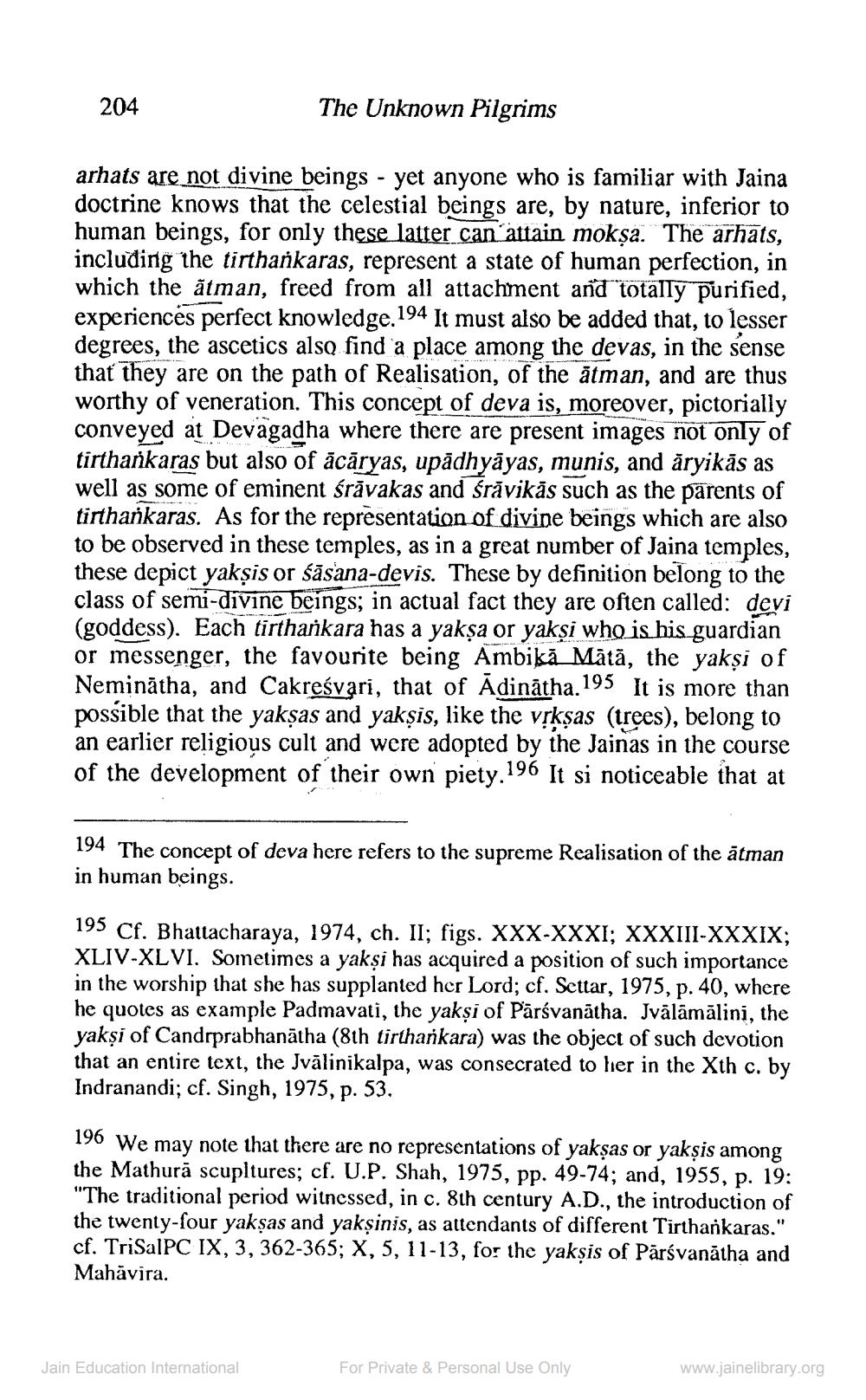________________
204
The Unknown Pilgrims
arhats are not divine beings - yet anyone who is familiar with Jaina doctrine knows that the celestial beings are, by nature, inferior to human beings, for only these latter can attain mokşa. The arhats, including the tirtharkaras, represent a state of human perfection, in which the atman, freed from all attachment and totally purified, experiences perfect knowledge. 194 It must also be added that, to lesser degrees, the ascetics also find a place among the devas, in the sense that they are on the path of Realisation, of the ātman, and are thus worthy of veneration. This concept of deva is, moreover, pictorially conveyed at Devagadha where there are present images not only of tirthankaras but also of ācāryas, upādhyāyas, munis, and äryikās as well as some of eminent śrāvakas and śrăvikās such as the parents of tirthankaras. As for the representation of divine beings which are also to be observed in these temples, as in a great number of Jaina temples, these depict yaksis or śāsana-devis. These by definition belong to the class of semi-divine beings; in actual fact they are often called: devi (goddess). Each tirthankara has a yakṣa or yakṣi who is his guardian or messenger, the favourite being Ambikā Mātā, the yakși of Neminātha, and Cakreśvari, that of Adinātha.195 It is more than possible that the yakşas and yaksis, like the vrkșas (trees), belong to an earlier religious cult and were adopted by the Jainas in the course of the development of their own piety. 196 It si noticeable that at
194 The concept of deva here refers to the supreme Realisation of the atman in human beings.
195 Cf. Bhattacharaya, 1974, ch. II; figs. XXX-XXXI; XXXIII-XXXIX; XLIV-XLVI. Sometimes a yakși has acquired a position of such importance in the worship that she has supplanted her Lord; cf. Settar, 1975, p. 40, where he quotes as example Padmavati, the yakși of Pārsvanātha. Jvālāmālini, the yaksi of Candrprabhanātha (8th tirthankara) was the object of such devotion that an entire text, the Jvālinikalpa, was consecrated to her in the Xth c. by Indranandi; cf. Singh, 1975, p. 53.
196 We may note that there are no representations of yakşas or yakșis among the Mathurā scupltures; cf. U.P. Shah, 1975, pp. 49-74; and, 1955, p. 19: "The traditional period witnessed, in c. 8th century A.D., the introduction of the twenty-four yakşas and yaksinis, as attendants of different Tirthankaras." cf. TriSalPC IX, 3, 362-365; X, 5, 11-13, for the yaksis of Pārsvanātha and Mahăvira.
Jain Education International
For Private & Personal Use Only
www.jainelibrary.org




